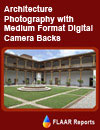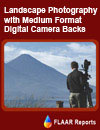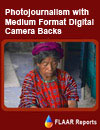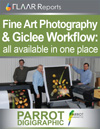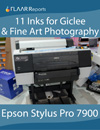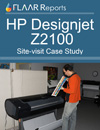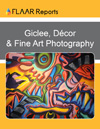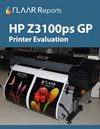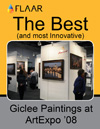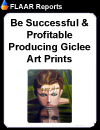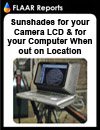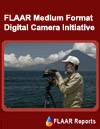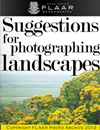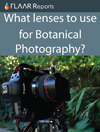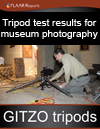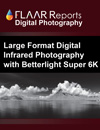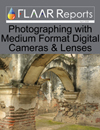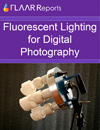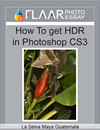Flash bracket attachments for digital cameras.
You can find camera flash brackets on display at PMA and PhotoPlus trade shows, as well as a few at Photokina.
- Bogen Manfrotto
- Custom Brackets
- Gary Fong Lightsphere-2 System
- Jones flash brackets (Veach)
- JustRite Bracket Company
- Kirk
- Newton N7400
- Quickflip
- RX Camera Accessories
- Stroboframe Pro-T
- Wimberley brackets
   |
 |
 |
| Some assembly required in the sense you have to be clever enough to unscrew the attachment plates until you can fit the camera on. The main hurdle is to get the connectors so the lens fits over the circular rotating frame. | |
But the one we use at FLAAR is the Jones flash bracket from Veach. It took a few minutes to unscrew both the base plates to raise it enough so the lens would fit over the round rotating gizmo, but we eventually figured it out.
It is made to hand-hold, for weddings and home shots and moving around on the weekend.
Each part is precision tooled; it looks well made. This is not some sloppy junk made in a garage.
As soon as we have more experience with the Jones flash bracket we will update this page.
 |
 |
| The advantage of a flash bracket is that you can shoot horizontally or vertically and still have the flash in the appropriate position. Of course this requires a sync cable, not shown here. | |
First posted February 22, 2007.
|
Nicholas Hellmuth’s Medium Format Digital Camera InitiativeFor over 40 years Nicholas Hellmuth has used Rolleiflex and Hasselblad cameras to record the flora, fauna, and archaeology of Belize, Guatemala, Honduras, and Mexico. Now for several years he is extending his medium format experience to digital photography. Since FLAAR works both in a studio as well as out on location, we are an ideal focus for judging portability. We have experience with large format digital scan backs (the excellent BetterLight) and we also use Nikon and Canon digital cameras. A full-service digital pro should have at least one medium format digital system and should consider large format digital options as well. Although we started with a Leaf Valeo 22 coupled with a Mamiya 645 AFD body and lenses, we are open to showcasing all bodies as well as other digital backs. Indeed we have tested an Imacon 4-shot back on a Hasselblad H1 body. Then (February 2006 onwards) we are evaluated a MegaVision black-and-white dedicated back for fine art photography. Next we are testing a 33-megapixel Phase One P 30. Since 2008 FLAAR has used a Phase One P25+ (a great way to update an aging Hasselblad ELX body with its excellent Zeiss lenses). Camera resellers or manufacturers who wish to have their cameras, lenses, and backs included in this initiative are welcome to send their equipment for evaluation. FLAAR is the de facto source of information because we have been university based, independent, blunt, and we are one of the few review sources that dares to review advertising specs, advertising claims, and advertising hype. We can afford to reveal all the pros and cons because FLAAR is a research institute. Photographers feel they can trust a university research professor who has devoted years to understanding the pros and cons of each aspect of a digital camera system and workflow. Notice you are not blinded by blinking, flashing, or pesty ads for low-bid camera stores on a FLAAR photography review. I am always amused by a pseudo-review that obviously is simply paid to send you to a camera store. You can download our colorful FLAAR Reports on our medium format digital camera initiative. |
|||||||||||
Free Reports (Inquiry Form)
Additional links of our FLAAR sites |
| Rigid Printable Materials |
| Printing on Glass |
| Sandwich board for recyclable furniture! |
| Metallic Effects |
Free Download Reports
| Home | About Us | Consulting | About FLAAR Reports | Site Map | Privacy Statement | back to top | |||||
|
|||||||||||
www.digital-photography.org is part of the FLAAR network © 2001-2021. If you notice a bad link, missing photos, misspellings, please report to the webmaster: |
|||||||||||


